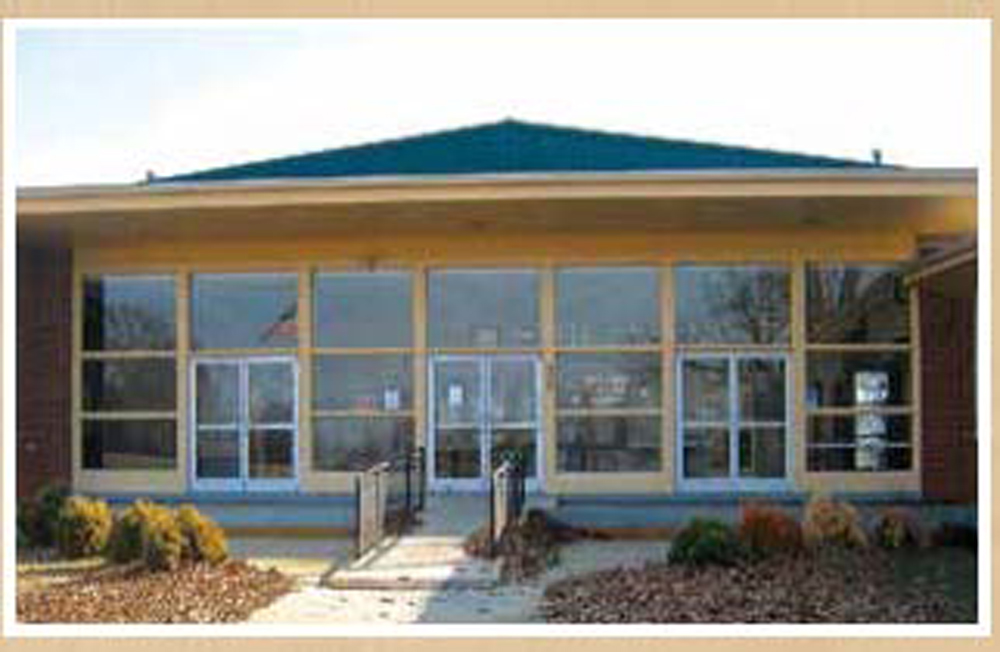
Webb School today, a Rosenwald school in McKenzie, TN
Sears legacy not just in retailing
Contributed By:The 411 News
Julius Rosenwald helped build thousands of schools across the south to educate black Americans
Sears announcement this week of its bankruptcy filing and closing of 142 stores did not cause waves. Troubles have long been mounting for the one-time world’s largest retailer.
In the last 5 years, Sears has shuttered 835 K-Mart locations and 335 Sears. Customers who once depended on Sears for home appliances and furniture have been teased away by specialty stores offering discount prices and other bargains. Changing shopping habits and the internet have also cut into its appeal.
Sears even branched away from retailing. It built the Sears Tower, bought AllState Insurance and financial services firm Dean Witter.
But Sears 130-year history is more than a legacy of retailing.
Wrapped in its past is nearly 20 years of philanthropy that helped build thousands of schools across the Jim Crow south to educate black Americans.
It began in 1913-14, when Julius Rosenwald, president and co-owner of Sears & Roebuck collaborated with Tuskegee Institute’s Booker T. Washington to build six schools for blacks in rural Alabama. Rosenwald served on Tuskegee’s board. Tuskegee students built the schools and were some of the teachers.
Across the southern U.S., racial segregation was hardened by Jim Crow practices that legally forbid the mixing of races. Blacks and whites attended separate schools. The south’s economy, mainly agricultural, provided only meager revenues to states for white public schools, and even less for the black ones. Most schools in black communities were started and supported by their churches.
When Washington died in 1915, Rosenwald continued the funding of schools for blacks until his death in 1932. From Texas to Florida and up the east coast into Virginia and Maryland, Rosenwald helped to build over 5,000 schools, shop buildings, and cottages for teachers.
Their construction was simple, 1- and 2-room schools made of wood. To get funding from Rosenwald, he required the communities to put up matching funds to build the schools. In many instances, local whites helped with the funding. The schools came to be known as Rosenwald Schools.
Few of the original buildings remain standing today. Some have been repurposed for other uses. And some have been rebuilt or remodeled to carry on Rosenwald’s mission to improve education for blacks.
Barbara Roper, a Chicago resident, attends the yearly reunion of Webb School in her hometown of McKenzie, Tennessee. Roper said Webb started as a church school in 1898. In 1923, the church pastor and a Tuskegee graduate J.L. Seets asked the Rosenwald Fund for help. The school changed its name to Webb, honoring John Webb who made the single largest personal donation to construct a 4-room school to replace the one-room building. “I believe his donation was $100.00,” Roper said.
Then, Webb was the only black school in Carroll County, TN. Roper said the school attracted more students and by the 1930s had outgrown the new building. In 1936, the school moved into the abandoned McTyeire College.
“When I started Webb in 1948, students who lived far away stayed in the dorms and went home on weekends. We also had bus service,” Roper said. In the 1950s, Webb School added more buildings. Roper graduated in 1960.
The civil rights era brought integration to Tennessee schools in the 1960s. Webb closed in 1965; its students were transferred to McKenzie’s white schools.
Roper said the Webb Alumni Association was formed in 1969. Next a Webb Development Association was formed. It purchased the closed Webb School in 1976, paying $95,000.00.
Today, it’s a community center and home for the Northwest Tennessee Head Start. “We rent it out for events and the building is now valued at over a million dollars,” Roper said.
Between 1914 and 1932, the Rosenwald School Building Fund assisted in building 354 schools for black Americans in Tennessee.
In 2002, the National Trust for Historic Preservation placed the Rosenwald Schools on its 11 Most Endangered Historic Places list.
Story Posted:10/19/2018
|